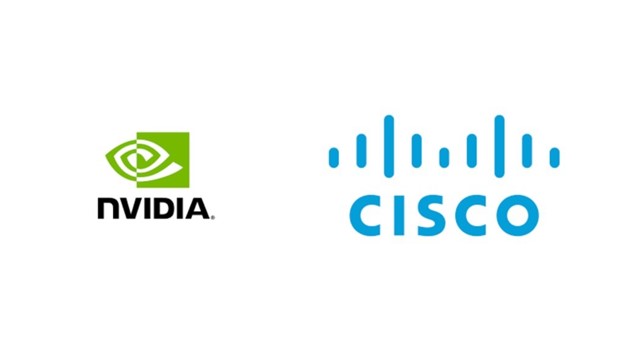
(This article is catered to an US based audience as it talks about investment options for US residents)
Over the last few years, there has been tremendous coverage about escalating college costs and trillion-dollar student debt. There was a presidential nominee, who ran a campaign propagating free college tuition.
Well that is not going to happen now nor in the distant future. Many of you may be still straddled paying your own college debt so leave alone thinking about your child or children’s future. Don’t worry I am also in the same boat as many of you.
But is that the right approach? The rationale is to start saving little by little and taking advantages of the TAX INCENTIVES that you may NOT be aware that exist.
Here are some of your options and baby steps you can take. I have highlighted the benefits and limitations of each of these options after doing extensive research over the Internet and reading books.
I have sited sources wherever possible.
- 529 Plans
- Custodial Accounts
- Coverdell Education Saving Accounts
- Mutual Funds
- Roth IRA & US Saving Bonds
529 Plans
529 Plans allows you to save money for college and provides tax advantages or the ability to lock-in present day tuition rates. Both individual states and private companies offer 529 Plans.
According to the Government Accountability Office 2012 study, ninety seven percent (97%) of the households DO NO USE the 529 College Savings Plans that grow tax-deferred and are exempt from federal income tax when they are used for qualified higher education expenses.
Those who do use them are disproportionately wealthy, with 25 times more assets than those who don’t use the plans.
There are two different types of 529 plans:
529 College Savings Plan is a tax-advantaged account that allows a parent to accumulate assets for use at any accredited college or vocational school in the U.S. and even at some foreign schools.
The key benefit of the plan is that you do not pay taxes on the investment gains, and 35 states (Source- Finaid.org) offer either tax deductions or tax credits as well.
The money can be used only for qualified expenses such as tuition, room and board, books, equipment and other required fees.
If you use the money for other than qualified expenses, the earnings portion of your withdrawal will be subjected to federal income tax and a 10% penalty.
529 Prepaid Plans allow you to prepay the tuition expenses at today’s rates. They are offered by your home state or by private colleges.
The advantage of this type of plan is that your child is protected against the inevitable future price increases. The disadvantage of the plan is that it limits your child to attend a home state college.
529 Benefits
Federal tax benefits– The contributions to 529 Plan grows tax deferred like the 401 K Plan (interest, dividends or capital gains accumulated in the plan are tax free every year) and the distributions are federally tax free when used for qualified expensive expenses such as tuition, room & board and other required fees.
Minimal Impact on Financial Aid- 529 Plans are considered parental assets and maximum of 5.6% of the 529 Plans are included when the Expected Family Contribution is calculated.
EFC is a measure of your family’s financial strength to pay for the college education and is calculated according to a formula established by law.
Your family’s taxed and untaxed income, assets, and benefits (such as unemployment or Social Security) are all considered in the formula. Also considered are your family size and the number of family members who will attend college during the year.
On the other hand, Custodial (UGMA/UTMA) accounts are treated as student assets and assessed at 20%.
No Income Eligibility– You can be of any income level and can contribute up to $ 400,000 per beneficiary in some 529 Plans
State tax benefits- States may offer their own income tax incentives for residents of their state, such as a tax deduction for contributions or a tax exemption for withdrawals used to pay the beneficiary’s qualified education expense.
Currently 35 US states offer either tax deductions or tax credits when you make
Annual Gift Tax free treatments– Plan contributions qualify for the $14,000 ($28,000 for joint gifts) annual gift tax exclusion (IRS 2016 rates) and a special election lets you contribute up to $70,000 ($140,000 for joint gifts) in a single year and avoid gift tax by treating the amount as a gift in equal installments over five years (no additional gifts can be made to the beneficiary during the five-year period without incurring a gift tax)
Rollovers- You can rollover an existing non-performing 529 plan to a new 529 plan once every 12 months without paying a penalty.
Simple and Flexible- It is relatively easy to open a 529 account, and most plans offer automatic payroll deduction or electronic funds transfer from your bank account to make saving for college even easier.
There are no tax consequences if you change the designated beneficiary to another sibling or member of the family.
529 Limitations
Taxes & Penalty for non-qualified withdrawals– There is a 10% penalty and tax implication if the money is used for anything other than college expenses.
It cannot be transferred to another family member if the beneficiary decides not attend college or attend a foreign or unaccredited school.
Grandparents owned 529 Plan Financial Aid Treatment– When the grandparent owns the 529 Plan, the financial aid – Expected Family Contribution calculation gets affect as the grandparent owned 529 plan is treated as a student asset and assessed at 20%.
Limited Investment options– though many of the states and private companies offer many investment portfolios, you can direct the portfolio’s underlying investments.
You are not guaranteed investment returns and do not have flexibility to change your portfolio multiple times a year. Some of the 529 plans underperform compared to the other taxable investments. The prepaid 529 plan’s money manager is responsible for investing your contributions.
Fees and expenses: There are typically fees and expenses associated with 529 plans that vary from 0.15 to 1%. You need to aware that college savings plans may charge an annual maintenance fee, administrative fees, and an investment fee based on a percentage of your account’s total value and prepaid tuition plans may charge an enrollment fee and administrative fees.
Custodial Accounts
(Uniform Gifts to Minors Act (UGMA) & Uniform Transfers to Minors Act (UTMA)
A custodial account is a savings account in your child’s name that you can control until child reaches legal adulthood (18 to 21 depending on the state). You seize to lose control once your child becomes an adult.
The distributions must be only used for the benefit of the child and cannot be withdrawn for any other purpose. You can deposit cash, savings bonds, and other securities in a custodial account. The custodial account doesn’t offer federal tax-deferred and tax-free earnings like a 529 plan.
The Uniform Gift to Minors Act (UGMA) established a simple way for a minor to own securities without requiring the services of an attorney to prepare trust documents or the court appointment of a trustee.
The Uniform Transfer to Minors Act (UTMA) is similar, but also allows minors to own other types of property, such as real estate, fine art, patents and royalties, and for the transfers to occur through inheritance.
The earnings are taxed every year according to the Kiddie Tax rules. The first $1000 of earnings is tax exempt, the next $1000 is taxed at the child’s rate generally 15% and any earnings over $ 2000 are taxed at the parent’s rate for the year.
Custodial Benefits
Unlimited Investment Options- You can decide how much to put into the account, how the money is invested, how earnings are reinvested, and when to take money out of the account to spend on your child’s behalf.
No Qualified Expenses Restrictions- Distributions can be used for the child’s college education or any other purpose benefiting the child.
Custodial Limitations
Heavy Tax Implications– Investment earnings are generally subject to federal and state income tax every year, and asset sales may trigger capital gains tax.
No Changing Beneficiary- You cannot switch the account to another child or use the funds for your benefit.
Loss of Control-When the child reaches adulthood, the custodianship ends and the child has the right to complete control of the funds.
Impact on Financial Aid– Custodial accounts is treated as student assets in Expected Family contribution calculation and is assessed at 20%.
Gift Tax Treatment- You can only contribute up to $ 14,000 annually ($ 28,000 jointly) in a year. You need to pay taxes for contributions over $ 14,000 and do not the have $ 70000 ($140,000 jointly) with 5 year election like the 529 Plans
Coverdell Education Saving Accounts
A Coverdell education savings account (ESA) allows you to contribute up to $2,000 per year per child for college expenses. The contributions accumulate tax deferred at the federal level and earnings are tax free when used to pay the your child’s qualified education expenses. Withdrawals for non-qualified expenses are subject to federal income tax and a 10% federal penalty on the earnings.
Your ability to contribute depends on your income. The contributions can be in name of the parent or the child and made until the child reaches 18 years old and needs to used by the time he or she turns 30 years
Coverdell Benefits
Federal tax benefits- The contributions grows tax deferred like the 401 K Plan (interest, dividends or capital gains accumulated in the plan are tax free every year) and the distributions are federally tax free when used for qualified expensive expenses such as tuition, room & board and other required fees.
Unlimited Investment Options- You can decide how much to put into the account, how the money is invested, how earnings are reinvested, and when to take money out of the account to spend on your child’s behalf.
Minimal Impact on Financial Aid- It is considered as a parent asset for federal financial aid purposes and assessed at a rate of 5.6% if the owner is the parent.
Coverdell Limitations
Only $ 2000 Maximum Contribution limit based on Income- Your ability to contribute depends on your income.
Age/Time Limit restrictions- The contributions can be in name of the parent or the child and made until the child reaches 18 years old and needs to used by the time he or she turns 30 years
Mutual & Index Funds
Most parents save for their child’s education expenses in the form of traditional mutual or index funds. They are taxable and do not guarantee any investment return.
Mutual & Index Funds Benefits
Unlimited Investment Options- You can decide how much to put into the account, how the money is invested, how earnings are reinvested, and when to take money out of the account to spend on your child’s behalf.
No Restrictions- There is any income, maximum investment and age limits for investing. They are beneficiary can be switched and you have control over the funds
Mutual and Index Funds Limitations
Taxable – The earnings on these mutual funds are taxable and they are no tax benefits if they are used for the college education costs.
Fees and expenses: There are typically fees and expenses associated with mutual and index funds and it varies depending on the company.
Roth IRAs and US Saving Bonds
There are other traditional tax-free withdrawal alternatives such as the Roth IRAs and US Savings Bonds. They have income, age and time period restrictions.
Roth IRAs
Roth IRA withdrawals after 5 years to pay your child’s qualified education expenses is not subject to the 10% premature distribution penalty tax that normally applies to taxable IRA distributions made before age 59½. You can contribute up to $ 5,500 ($ 6,500 for tax payers age 50 and over) per year.
US Savings Bonds
The interest earned in Series EE and Series I savings bonds is exempt from federal income tax if the bonds are used to pay college expenses. A partial exemption of interest is allowed for people with incomes slightly above these levels. Income levels are indexed for inflation each year. The interest earned on U.S. savings bonds is always exempt from state income tax irrespective of your income level. You can contribute up to $10,000 face value per year, per owner, per type of bond.
Roth IRAs and US Saving Bonds Benefits
Fixed and Secure Investments in US Savings Bonds- There is less risk associated in investing US Savings bonds unless the government defaults.
Unlimited Investment Options in Roth IRA- You can decide how much to put into the account, how the money is invested, how earnings are reinvested, and when to take money out of the account to spend on your child’s behalf.
Roth IRAs and US Saving Bonds Limitations
Age/Time Limit restrictions- Age and time line restrictions for withdrawals from Roth IRAs
Income Eligibility- You need to be in certain income bracket to qualify to invest in these options.
Contribution limit – You can contribute up to $ 6500 per year depending on your age in Roth IRA and contribute up to $10,000 face value per year, per owner, per type of US Saving bond.
In conclusion, it is worth to start thinking about college planning and securing your child’s future so that he or she will not straddled as much in debt like you or me are today.
Disclaimer– I am not a financial advisor or planner but sharing my interest and the research that I have done on this subject.
-
Next Post
Do Customers really know what they want?







Εγγραφετε για να λβετε 100 USDT
December 5, 2024Thank you for your sharing. I am worried that I lack creative ideas. It is your article that makes me full of hope. Thank you. But, I have a question, can you help me?
binance us kayit ol
December 21, 2024I don't think the title of your article matches the content lol. Just kidding, mainly because I had some doubts after reading the article.
binance konto
January 5, 2025Thank you for your sharing. I am worried that I lack creative ideas. It is your article that makes me full of hope. Thank you. But, I have a question, can you help me?
binance
January 11, 2025Can you be more specific about the content of your article? After reading it, I still have some doubts. Hope you can help me.
binance
March 5, 2025Your article helped me a lot, is there any more related content? Thanks!
Binance账户创建
March 7, 2025Thank you for your sharing. I am worried that I lack creative ideas. It is your article that makes me full of hope. Thank you. But, I have a question, can you help me?
odprite racun na binance
March 24, 2025I don't think the title of your article matches the content lol. Just kidding, mainly because I had some doubts after reading the article.
Binance美国注册
March 27, 2025Can you be more specific about the content of your article? After reading it, I still have some doubts. Hope you can help me. https://accounts.binance.com/da-DK/register-person?ref=V2H9AFPY
conta da binance
March 30, 2025Can you be more specific about the content of your article? After reading it, I still have some doubts. Hope you can help me.
código de Binance
April 1, 2025Your point of view caught my eye and was very interesting. Thanks. I have a question for you.
affilionaire.org
April 12, 2025I'm extremely inspired with your writing skills as well as with the layout for your blog. Is that this a paid topic or did you modify it your self? Anyway stay up the nice high quality writing, it is rare to see a nice blog like this one these days!
binance anm”alan
April 30, 2025I don't think the title of your article matches the content lol. Just kidding, mainly because I had some doubts after reading the article.
Registrasi
May 27, 2025Can you be more specific about the content of your article? After reading it, I still have some doubts. Hope you can help me.
binance us register
May 28, 2025Your article helped me a lot, is there any more related content? Thanks!
binance Konto
June 16, 2025Your article helped me a lot, is there any more related content? Thanks!